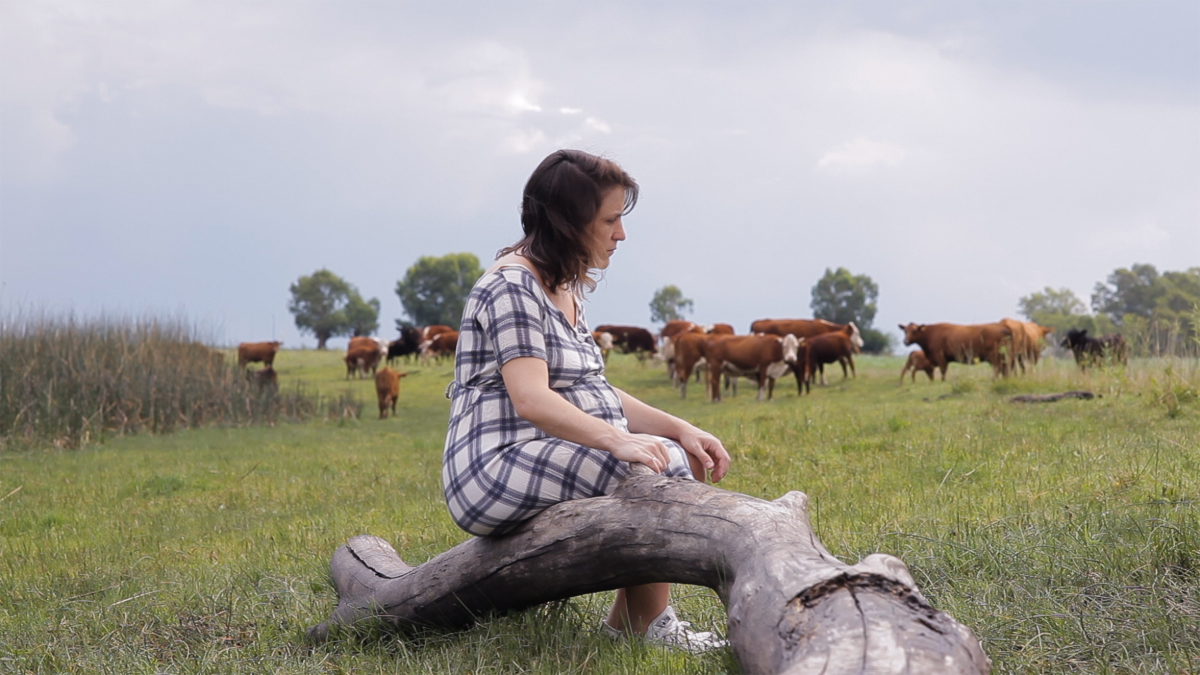Two men are searching for clues about a recently disappeared woman named Laura. It’s difficult to make out what their relationship to one another or to the woman is at the beginning, but we later learn they are both in love with her. This could almost pass for a summary of Otto Preminger’s 1944 film noir, Laura, as well, but the similarities don’t stop there. If in Laura, Dana Andrews’ detective McPherson develops an obsession with the eponymous character through reading her letters, in Trenque Lauquen, Laura and her friend “Chicho” Ezequiel become obsessed with a mysterious Italian woman after coming across her erotic correspondence with her lover.
Director Laura Citarella, best known for producing her “El Pampero Cine” colleague, Mariano Llinás’s films, anticipates a question the viewers might be asking themselves early in the film. Laura is excitedly recounting the unlikely story of how she discovered the letters to Chicho, who, after listening in bewilderment for a few minutes, finally asks, “so what’s the mystery?” And indeed, the mystery of the film remains vague until the end, taking the form of an obscure Rivettian conspiracy. And there are direct connections to be made with Rivette films, including Out 1 (Juliet Berto stealing the letters that may belong to “the Thirteen”) and Celine and Julie Go Boating (Laura discovers the letters inside books at a local library; a peculiar lesbian couple living in a big house appear in the second half).
Like Celine and Julie, Trenque Lauquen is a film about the mechanics of storytelling. Most of the film’s 260-minute runtime (divided in two parts) is spent with characters recalling events and telling each other stories. Narrative clues are distributed gradually, but in a way that doesn’t give the appearance of the film intentionally withholding information. There is a convincing casualness about it. We are dropped in this environment and so the only way to learn about it is to listen carefully and observe patiently. In this sense, the film also teaches us how to view it from the very beginning. The film opens with Rafael, Laura’s boyfriend, on the phone in the background of a long shot. Eventually, Chicho enters the frame in the foreground, and Rafael approaches him, as the camera reframes. Throughout the first half, this foreground/background play (associated with Chicho and Rafael respectively) is expanded on and repeated. In a later scene, Chicho is in the passenger seat of his car, while Rafael is asking a local man if he’s seen Laura pass through there. Chicho is discreetly glancing at a note left by Laura on the windshield of the car, a note he doesn’t wish to share with his love rival. We encounter yet another similar setup later: Chicho in the car in the foreground, Rafael outside on the phone, pacing in the background. Given the character whose point of view we share most intimately in the first part is Chicho, and that he is the more passive of the two male characters, but also closer to knowing the truth, it makes sense for him to be placed in the foreground of the frame, often immobile, while the more proactive Rafael, who is also further from solving the mystery, is treated as a more dynamic presence in the background. In this way, returning to the same compositional strategy reinforces character dynamics, while also giving us patterns for viewing the film.
Through the extended flashbacks and non-linear structure, the idea of “returning” becomes important. Return to locations, characters, narrative details, props, music, etc. that gain new meaning with each appearance (let us return to Laura once more, another film about returning). Trenque Lauquen itself (a small city in Argentina) becomes increasingly familiar, as we learn about different locations and their significance. Extended driving sequences (mostly with the pensive Chicho), provide the opportunity to look around the city. A building we see in the first hour of the film, simply as scenery with no special interest, takes on added meaning when we see it again in the second, third and fourth hours. This is made possible in no small part thanks to the length of the film, which allows for such discoveries to occur naturally, without being imposed on the audience. Here is a film with enough grace and patience to let its viewers look around for themselves. This might give the impression that Trenque Lauquen is a meandering and self-indulgent film, but for the most part it’s the opposite. At points, it’s even economical in expression. Shots and scenes flow smoothly into one another, thanks to the judicious use of the wonderfully varied music, and the combined effect of sound design, voiceover narration, and a propensity for employing dissolves.
Dissolve is not a form of transition that we see often these days, belonging more to Laura’s classical Hollywood. But it seems fitting in a film that deals with and moves freely between past and present. Afterall, dissolve is the trace of the future in the face of the past. In the tiresome assortment of pompous festival films with no memory of their own medium, here is an ambitiously modest film that remembers that history well and knows how to return to it. Like its circular narrative structure or fondness for dissolves, Trenque Lauquen seamlessly moves between the past and present of cinema and gives us a glimpse into its future.
